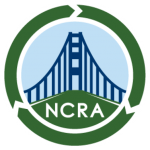By Susan Blachman
I watched the UCSF Willed Body Donation staff respectfully dress my father’s body, gently lift it from his bed and place it into a maroon colored body bag on a gurney, zip it closed and wheel it away. Since he lived in a community of elders, they were thoughtful about how they transported his body in the common spaces.
As a child of the Depression, my dad was thrifty and an ardent proponent of recycling and reuse. Also, he was committed to education. So, many years prior to his cancer diagnosis, he and my mom agreed to donate their bodies to science through the Stanford University Willed Body Program.
We try to be green while we live, but what about when we die? Traditional ground-based burial has major environmental impacts. Embalming fluids pollute the soil. Energy, chemicals and water are expended in manufacturing and transporting tombstones, caskets, flowers and maintaining cemeteries.
There are more environmentally benign alternatives — green burial, willed body donation, whole body burial at sea, cremation and backyard burial. More unusual alternatives under development include promession and alkaline hydrolysis (used by veterinary schools to dispose of animal remains using a decomposing solution), human composting and infinity burial suits (which contain mushroom spores embroidered into the fabric that detoxify the body as it decomposes).
There are over sixty-five medical schools across the country that accept full body donations for research and education, as well as a number of for-profit companies engaged in the development of medical and surgical products.
Willed body donation is available to almost everyone. However, some programs, like Stanford’s, reserve the right to refuse donations and most do not accept bodies lacking donated organs and/or tissue. In general, organ donation can occur only if death takes place in a hospital where the organs can be quickly harvested.
Much as he wanted to know, the Stanford University Willed Body Program staff could not commit to accepting my father’s body until he was close to the end. About a week before he died, they refused his donation because his edema exceeded 2 (meaning, it took more than 2 seconds for his skin to smooth out after being poked due to water retention). Quickly, I turned to the internet and learned that the UCSF Willed Body Program is less particular. I helped my father apply to UCSF and his application was promptly accepted, allowing him to brag that he was admitted to two of the nation’s top medical schools.
After the medical school or research institution has finished using the body, the remains are cremated and scattered, or in some cases the ashes are returned to the family. UCSF scatters the ashes at sea, while Stanford allows families to choose.
Since its inception, the UCSF Willed Body Program has supplied cadavers to UCSF’s medical and dental programs, UCSF pharmacy and physical therapy students, anatomy courses in the Cal State and community college systems and private universities throughout northern California. Donated bodies are used to teach students and to develop and test new surgical procedures and devices. As the UCSF website states: “the need for donations is great and the gift is valued and honored.”
The UCSF Willed Body Program does an amazing job of providing an unusual and important service. I am proud, pleased and amused that in his last act my father was able to die as he lived, in pursuit of his values of scientific knowledge, education, recycling, reuse and frugality.
For more information, please visit the following sites. Even if you sign up, you and your family are under no obligation to donate your body. Read more… UCF and Stanford
